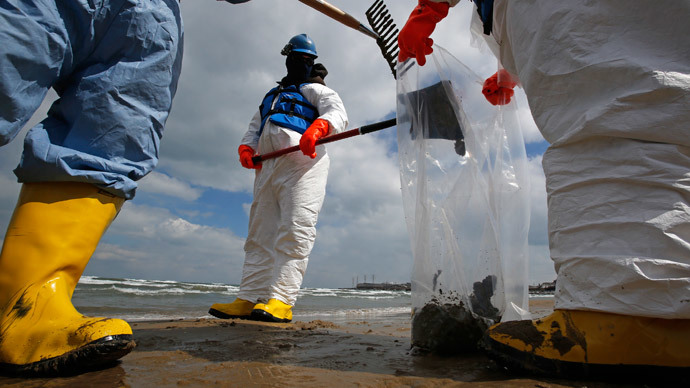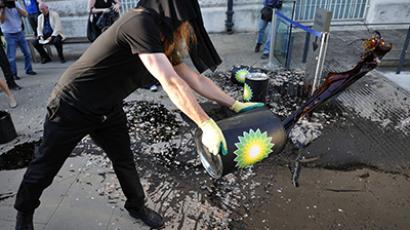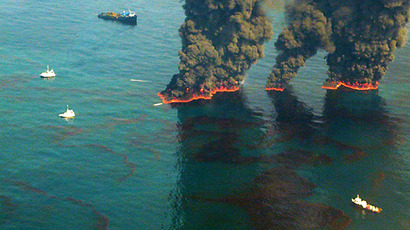BP caps cash pipeline to research worst oil spill in US history

BP, the fifth largest company in the world, is refusing to foot the bill for US government-sponsored studies into its 2010 Gulf of Mexico oil disaster, including research into its impact on marine life, according to documents seen by the Financial Times.
The US government in July requested $148 million from BP to fund research work into the consequences of the spill, which started on April 20, 2010 when the Deepwater Horizon oil rig exploded and sunk in the Gulf of Mexico.
The disaster killed 11 workers, released about 206 million barrels of crude into the Gulf of Mexico and caused catastrophic environmental damage. Oil continued to pour from the underwater pipeline for 87 days, causing the contamination of sensitive estuaries and beaches in four states, as well as dealing a major blow to commercial fishing and local businesses connected to the industry.
In October, BP rejected the majority of those requests not over the additional costs, but rather “the lack of visibility and accountability” in the process, as well as the government officials of the NRDA “to engage in technical discussions of the substantive issues.”
BP says it has already paid more than $1bn for the Natural Resource Damage Assessment (NRDA), a detailed analysis that is aimed to provide a comprehensive account of the total damage caused by the spill. This is in line with BP’s stated commitment of “funding environmental restoration for damage caused by the spill, and a comprehensive scientific assessment of the effects of the spill is the first step in that process.”
In addition to the hundreds of millions already paid by BP, the US National Oceanic and Atmospheric Administration (NOAA) in July requested about $148m from the oil major to fund “injury assessment and restoration planning activities.”
The range of scientific studies included research into the recovery of the coastal wetlands ($2.2m), programs to alleviate the habitat damage to dolphins and whales (more than $10m), as well as oysters, which make up a large bulk of revenue for local fishermen in the affected zones ($22m).
BP, which has already spent over $26 billion - or more than one-third of its total revenues for 2013 - on clean up and compensation for the disaster, believes that some of the government studies could prove that damage from the spill is actually “less than feared.”
Meanwhile, the oil giant has expressed doubts over many of the settlement claims.
Last month, a US appeals court ruled rejected BP’s effort to stop businesses affected by the Gulf of Mexico spill from collecting what the oil giant called “fictitious losses,” arguing that BP must reimburse companies and individuals even if they don’t submit proof that their losses came from the spill.
BP claimed in December that it had to pay hundreds of millions of dollars to businesses and individuals that exaggerated losses from the disaster. However, according to public settlement records, just 20 out of over 3,000 claims for failed business have been paid to date.
Meanwhile, the physical effects of the oil spill continue to linger as tarballs are still being cleaned from affected beaches four years after the catastrophe.
The BP Gulf spill has gone down in the record books as the largest marine oil spill in the history of the industry.














